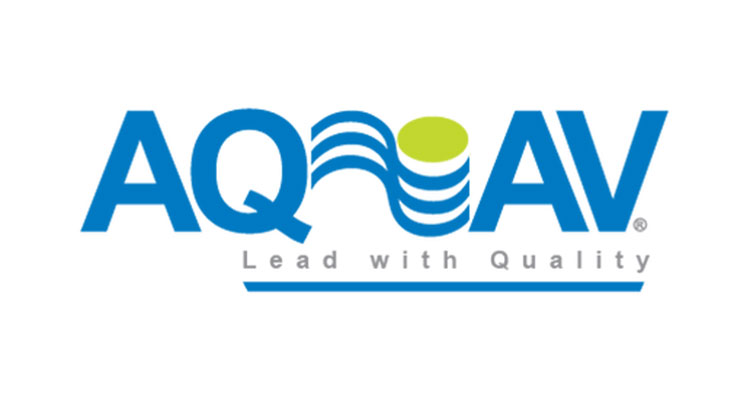A New Era in AV Technology Integration
Note from Gary: We’re taking a stand. As a regular reader of rAVe, you know that we don’t just report news. We explain why a particular product or technology matters (or doesn’t) and why you as an integrator, design consultant or manufacturer should care about something. We don’t just re-publish press releases as news; we take a stand.
So in that tradition, we’re endorsing AQAV – the Association for Quality in Audio Visual Technology and its push to get everyone in AV to adopt what it’s calling AV9000. The AV9000 Compliance Program is intended to provide a “stepping stone” for companies to demonstrate their commitment to quality on behalf of the end user. It addresses the Quality Management used by Manufacturers, Designers, AV Integrators and Technology Managers as well. It requires effort and those who can attain the Certificate of AV9000 Compliance earn the right to use the logo in promotional materials as a means of validating that conviction.
This will not be easy for an AV integrator to attain. But, it will serve as a differentiation point between those who are just glorified hand-and-bangers and those who are truly AV integration firms.
So today, along with AQAV’s executive director Mario J. Maltese, we start an multi-part series on the AV9000 standard and why you should care and consider adopting it.
 Isn’t AV Technology great? It can do so much more… faster, brighter, higher resolution, clearer audio… it’s simply amazing. Buyers can’t get enough. And there are new technologies, products and features coming out every year. It’s tough to keep up.
Isn’t AV Technology great? It can do so much more… faster, brighter, higher resolution, clearer audio… it’s simply amazing. Buyers can’t get enough. And there are new technologies, products and features coming out every year. It’s tough to keep up.
So tough, actually, that even the people charged with designing, furnishing and installing this technology are struggling to the point of never finishing a project. The more complex an engineered AV system is, the more difficult it is to complete.
The players may have joined the industry from several different paths. Some came from “box houses,” whose margins shrunk dramatically with the speed of the internet buyer. Some came from the commercial sound industry, where the complexities of digital video, display engineering and AV control are new concepts. Some came from the IT industry, where electro-acoustics, digital video and visual acuity are foreign to the pre-engineered systems they were used to.
The point is, if you are still designing and installing systems the way they were being designed and installed ten years ago, you’re in a real pickle. And the probability that customers actually receive what they thought they were going to receive at the time of order is getting smaller.
Surprisingly, there are some that are actually still purchasing equipment, shipping it to the installation site, and think they can just hire an outside contractor to hook it up. The reality is quite different. Those contractors spend three to five times the estimated hours on-site, the AV system is oftentimes never completed and the installer simply writes off any retainer that was written into the contract. Despite rising sales, net profits are abysmal, and the customer’s apparent and hidden losses are unbelievable (estimated to be $17B industry-wide).
For one reason or another, the AV Technology industry has been loathe to embrace what other industries have also been forced to, which is a set of critical management principles and techniques that are essential if the customer is to get what was ordered, and if the companies that fill those orders is to make profits with pride and integrity.
It’s called Quality Management, and there are a growing number of enlightened AV and IT companies that have implemented a Quality Management System (QMS). Simply put, a QMS is a defined system of processes that a company uses to assure that the company actually delivers what was promised, as well as provide for continual improvement. These processes define how information and product moves through an organization efficiently. In other words, it addresses the human systems that companies use to design and install AV systems.
Nearly all companies possess some form of a QMS, but more than likely it is not well defined, not followed by everyone, or is missing key aspects of quality that are necessary for the bottom line.
A QMS is unique to each company and location. This is because a company’s individuals possess varying degrees of knowledge, experience and skills, and so the processes must channel work flow accordingly.
 There is one area of common ground that all AV companies can share. That is in the metrics, or the measurements and inspection that all companies can use when they put a system together. One can’t simply blow into a microphone, hear sound out of the loudspeakers, and expect that the client will be satisfied that the sound system has been installed. The client expects more. Is it loud enough? Is it noisy? Does it distort? Shouldn’t there be a standard battery of tests that can be included in every AV company’s QMS to consistently assure that each and every system has been completed?
There is one area of common ground that all AV companies can share. That is in the metrics, or the measurements and inspection that all companies can use when they put a system together. One can’t simply blow into a microphone, hear sound out of the loudspeakers, and expect that the client will be satisfied that the sound system has been installed. The client expects more. Is it loud enough? Is it noisy? Does it distort? Shouldn’t there be a standard battery of tests that can be included in every AV company’s QMS to consistently assure that each and every system has been completed?
Engineered AV systems are complex. The tests need to be:
- Comprehensive enough to catch ALL defects in a system before it is presented to the client, so that the AV company does not have to return for profit-eroding service calls.
- Efficient enough to be economically applied. Testing and verification costs money, and adds to the Cost of Quality. They must be simple, easily applied, and focus on the design and integration effort.
- As objective as possible. The tests need measurements with calibrated instrumentation. Unless you can place a number on something, all you have is a biased, subjective opinion, and grounds for time-wasting poor communications between parties.
That is where the AV9000:2012 Standard comes in, and goes beyond. It indeed presents a guide that has been proven, in over a thousand systems, to be the simplest, most cost effective criteria for verifying that the engineered AV systems is indeed complete, free of defects, and compliant with the customer’s expectations in product, practices and performance. But it also presents criteria for verifying that the system is in compliance at every key milestone in a project’s development. In this way, defects can be identified and corrected early on, when the cost for corrective actions are significantly lower than they would be if detected after the system has been permanently installed.
AV9000:2012 is the most significant event to happen to the AV industry in years. Its significance is amplified because it is written specifically for the benefit of the end users, and in doing so will therefore benefit all the AV industry stakeholders.
When the Standard is consistently followed, the effects on the AV Company are dramatic. Pride in their craft overtakes the “catch-me-if-you-can” mindset. The team focuses on improving the process, rather than finger-pointing. Retention improves.
The AV9000 Standard is the product of the non-profit group The Association for Quality in Audio Visual Technology, Inc. (“AQAV”), which also provides training on the standard and certification on the operational art of AV system quality audits.
More information can be found on the AQAV website, which can be found here.





